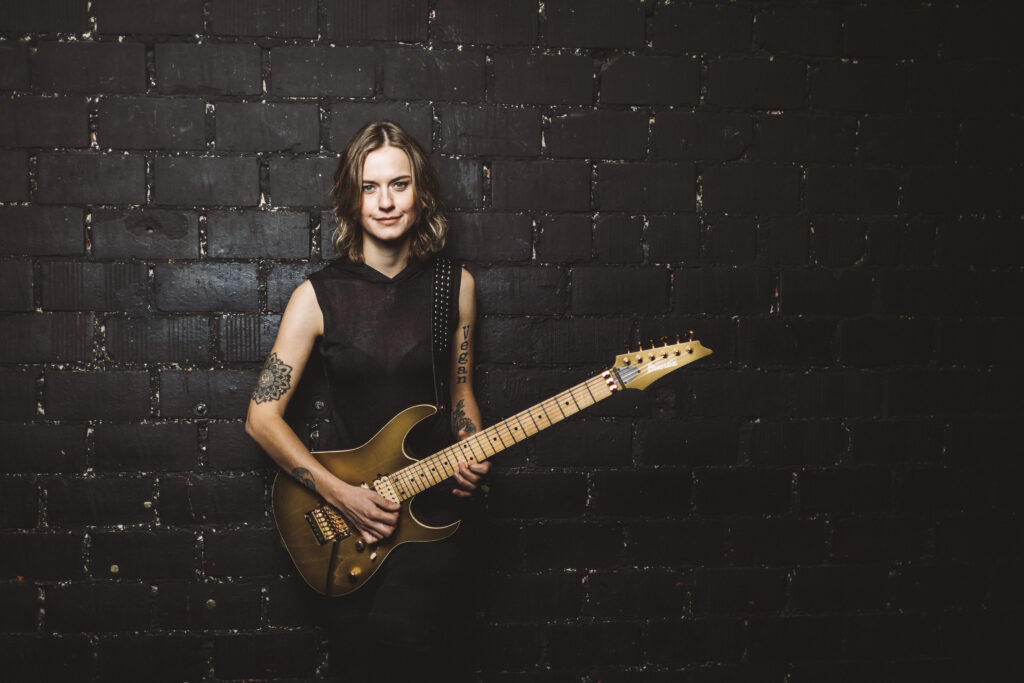Yasi Hofer, born in 1992, is a German guitarist from Ulm. She plays and sings in her Yasi Hofer Trio and has released four CDs to date. Her next album “Between the Lines” is expected to be released in February 2023. Besides additional live and studio session work, she is also the current live guitarist for German acts No Angels (http://noangels.net/) and Helene Fischer (www.helene-fischer.de).
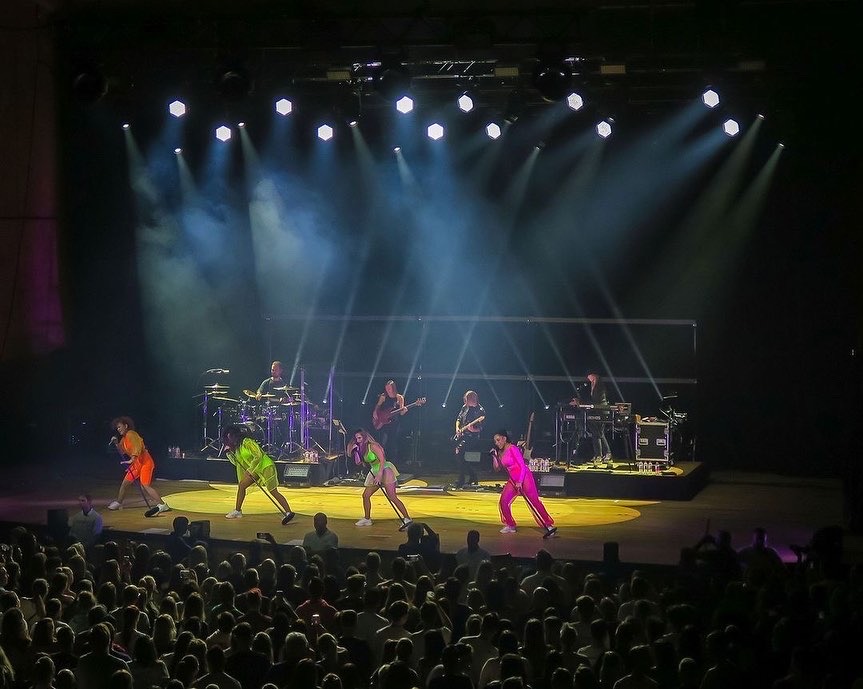
She started playing the electric guitar at the age of 12 and was soon influenced by Steve Vai and learned a lot of his music along with countless hours of practicing. Her attempts to master Vai’s music on YouTube brought her millions of views and Steve Vai’s attention. She was invited in 2007 to join him on stage for a song in her hometown. This resulted in some media attention and the chance to release her own music. She left school at 15 and studied music at the “Musikhochschule Stuttgart” and moved on to the famous “Berklee College of Music” in Boston, having won a scholarship.
Her first album “Yasi” was released in 2014 and has guest appearances by Philip Bynoe, bass legend Hellmut Hattler and other musicians from the Berklee College of Music. In the following years, Yasi played many concerts and shared the stage with UFO, Chris Thompson,Steve Vai, Savoy Brown, Hellmut Hattler, Gil Ofarim and Neil Young. Her second album was released 2016 featuring Marco Minnemann and Hellmut Hattler. 2019 saw the release of “Freedom”.
We caught up with Yasi to talk about her recent work which also includes the work with the Kemper profiler.
The tour with No Angels has just finished. How many concerts did you play?
I am back home in Ulm now. We played 10 shows on the tour plus seven single concerts in the summer. The highlight was playing Wuhlheide in Berlin in front of 15.000 fans.
And in addition, you joined the live band of Helene Fischer …
Yes, I did this year. The first show was in April in Switzerland with a couple of single shows to follow. Since the band was completely new, we had a long rehearsal period before that. In August we played Europe’s biggest concert – in front of 130.000 people. That was crazy!
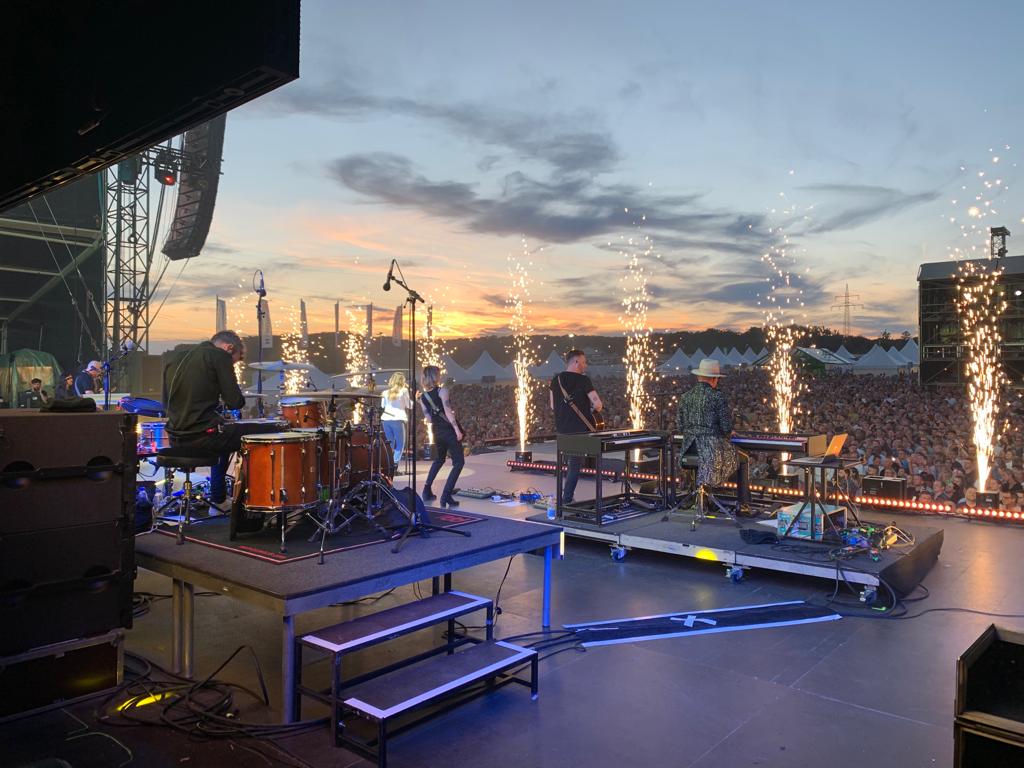
By taking a look at your website, your schedule seems pretty full because you also play with your own band.
I was lucky, to be honest. Because of Covid, we didn’t plan too many gigs with the band, wanting to watch the situation first. In addition, my new album “Between the Lines” had to be completed, too. So, I had the time and everything went fine with the planning, with the exception of my album being delayed.
So what’s the state of the album?
I just finished all recordings for the album. Last week I was in the studio mixing. This is still taking some time and the album will be mastered next week. In the meantime, we work on the artwork and putting up a new homepage plus my booked shows for next fall. There’s a tour with Helene Fischer scheduled starting March 2023 and it would be great to play a few shows with the album being released before that. I am so excited to finally share my new music with the world. I think it’s my most progressive album. It contains four songs with me singing, the rest is instrumental with lots of really cool riffs and licks guitar players might get a kick out of :). The release date is February 16th along with a release concert the same day at the Colossaal in Aschaffenburg.
How do you record?
I have been playing my Ibanez AZ guitars and the Carvin Legacy – it has been my main amp for 14 years. I also use a Neve preamp when recording, but have intentionally avoided effects so far. Unlike previous recordings, I decided to record dry and will add effects later on in the production. There’s one exception where I used a delay pedal. Of course, I’ll sometimes have a Strat or a Tele in my hands, depending on the sound I want. This time I used three microphones to get my sound which goes in the preamp and onto my Pro Tools system.
When and how does the Profiler come into place?
I have not yet used it in the studio, but a lot on stage with No Angels and Helene Fischer. I am really happy with it because it is so handy to travel with. I can put it in my bag, move to the next production and have everything with me.
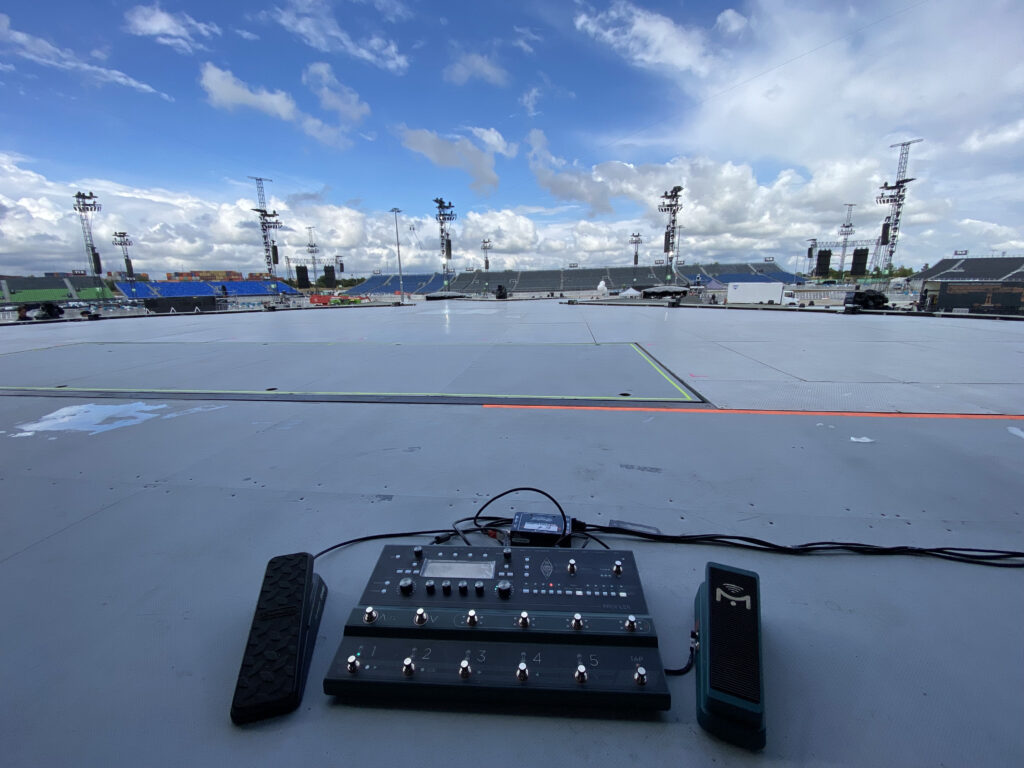
Which sounds do you use?
I mainly use profiles by Michael Britt which I really enjoy. I mostly use profiles of a Marshall, a Vox AC30, and a Fender Deluxe Reverb. For my trio, I use my Carvin and wouldn’t want to miss it. We play small clubs and I love my amp to stay right behind me. For all the big productions, I use the Profiler. I have searched and found a few good Carvin profiles. But the sound was simply not needed so far.
Typically, the musical producer would have a vision of the sounds that should be used. And this is where the Profiler can really deliver. I remember being at the first rehearsal with the Helene Fischer band. I just got my Kemper and didn’t fully get into it yet. So I brought my Carvin profiles. But they asked for specific other sounds.
It would typically be either the sound of the original recording or a sound the musical producer asks for. This approach was new to me since I have not played for such big productions before that.
How many different sounds do you typically need for your projects?
When I use the Carvin, I have a clean and a drive channel. I control the amount of distortion from my guitar. Additionally, I will typically use a reverb or a delay pedal, sometimes a chorus, a phaser and obviously a wah pedal. With the trio, I keep it to a smaller sound choice, because I want to focus on my guitar sound as a specific voice which shouldn’t change all the time.
Using the Profiler was a new experience. If I use an AC30 sound, for example, I use different profiles with different drive intensities. I tend to fill up a bank for the song in order to switch between different sounds for the different parts such as verse or chorus. And you can easily fulfill the need for specific sections where you want your sound to be louder or more cutting in a certain way to fit the mix. I have one profile per song with five programs plus a boost switch when needed. The range of sounds I need for No Angels and Helene Fischer is simply wider than for my trio. I use more sounds and often need certain effects for playing small melodies such as delays or a tremolo. I would need a really large pedalboard to handle this with a regular amp, plus a lot of tap dancing.
Do you feel a difference to a real amp if you use your guitar’s volume pot?
Yes, I do. It is certainly a different feeling that I had to get used to. It is maybe not equally sensitive as a good real tube amp. But I compensate for this by using different programs in the Profiler.
What’s the advantage of using the Profiler for you?
Besides the portability, it is the flexibility you get in general. Pop music has a demand for many sounds, unlike blues or jazz for example. You need to be able to add specific effects at a certain time and take them away quickly as well. The profiler has a big advantage here. Also, it allows recalling all these sounds via MIDI remotely which will give me a lot more freedom on big stages perspectively. Another important aspect is having a noiseless stage. It was a demand for both No Angels and Helene Fischer. No amps on stage.
How is the sound handled in these large productions?
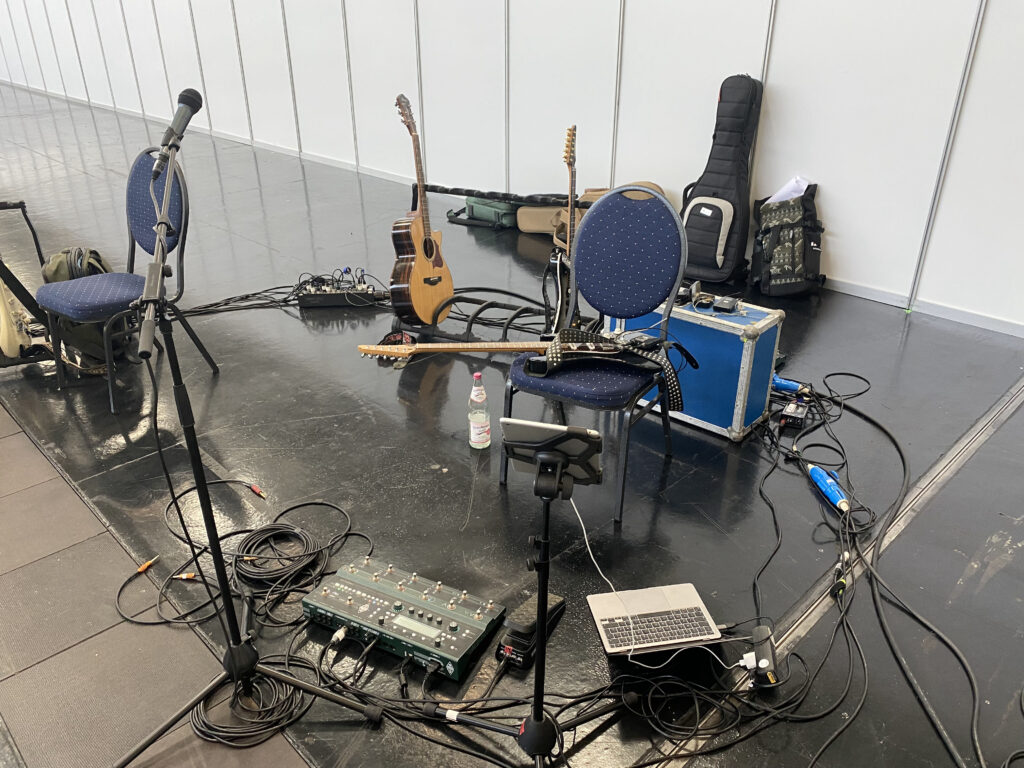
The profiler signal output goes to the front of the house directly plus to the in-ear-monitors.
The whole topic was pretty new to me, so I was certainly talking and interacting with the FOH engineer. I had originally set up my Profiler sounds with the Kemper Kabinet. But when I didn’t bring it, it sounded different of course. So I had to find out how I sound in the audience and on the monitors. And the engineer found a specific midrange to give my sound more body. We also worked out a plan to create a good stereo image since with No Angels there’s no other guitarist. So we tweaked the delays for certain sounds to give it more width while others are more dry and centered. The whole idea was to make it sound great for the audience and we adjusted the profiles and effects in that regard. Sometimes, effects were added from the mixing console and we made recordings to double check if the results were fine the next day. It was a great experience for me since it also feels really different to no longer have an amp in the background, but just sound in your ears.
I have to admit of being skeptical to use the Profiler first. But it turned out that it is a lot of fun and the resulting possibilities are just great. And to make it clear. A production like Helene Fischer would be really hard to do with real amps.
So I guess, you use the effects built into the Profiler?
Correct. I have a volume pedal and the expression pedal for the wah but no external effects. It all works great.
Did you try making your own profiles?
Not yet since I didn’t have the time yet. But I will certainly try to do some profiles of my Carvin. Especially since I am going to do some recordings soon for the album. I have heard different opions about doing profiles. Some say, it’s easy and fast, others say it is a long process to get good results.
I would encourage you. Since you have a control and recording room, you have the best conditions.
Yeah. Plus, there are really lots of profiles for sale. And some are really good. When I got the Profiler I have spend quite some time checking the sounds and tagging my favorites. So far, I often come back to Michael Britt’s Vox AC30, his Marshall and Fender. Those sounds simply sound and feel good to me and work on the projects. You can certainly get lost in the sheer number of sounds. I got advice from several engineers to focus on a small selection. It gets difficult for the sound engineer if you change between too many amps during a song since you end up on the same console channel always. So two, or three amp profiles should provide the basic sound that you work with.
Do you have any issues with latency?
I notice a latency when I hear the FOH sound, of course. But it is not an issue when the In-Ear-Monitoring is set up. It wouldn’t work in these projects otherwise, since micro-timing is pretty essential. And we have a click-track plus additional playback. Playing feels different though. Not in a bad way. I found myself paying more attention to little details when it comes to certain aspects of your sound, compared to a real amp. It even comes to a point where I feel I should work on details to play more precisely.
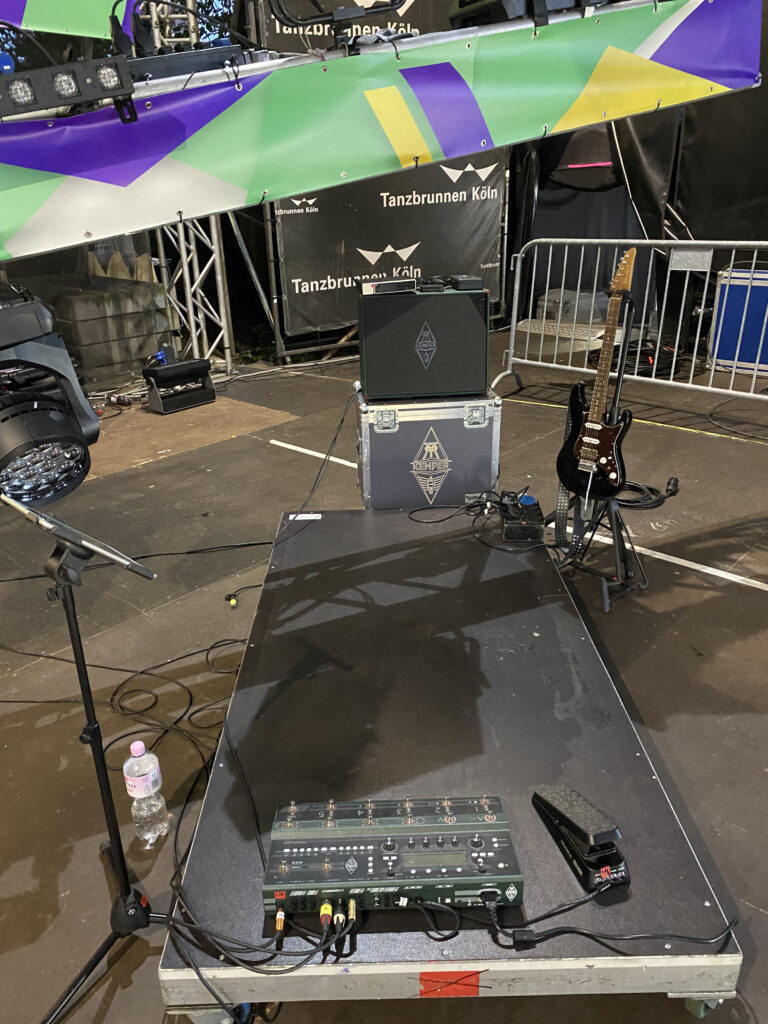
Do you adapt your profiles to the guitars you use?
It is really interesting since you will immediately notice a difference in level if you change your guitar. I use a black Ibanez AZ as my main guitar and have a second one in case a string breaks. I still might hear a slight difference. I haven’t changed the whole setup for that reason because the guitar tech will restring the instrument really fast. So basically, I try to stick to a specific guitar when I use a given sound. All the sounds in the arrangement have been carefully adjusted in level. So, it’s best to change strings more often and avoid strings breaking this way.
Do you use in-ear monitors with your trio?
So far, I don’t. It might be an option in the future. We do not bring our sound engineer currently and it would be too risky to rely on that. The perceived feeling of playing guitar is really different.
Thanks a lot for the talk and good luck with the new album!
You may also like
-
Her name is LUCA
-
Fiedler Audio Breaks New Ground in Immersive Audio Production and Mastering
-
KEMPER PROFILER MK 2, more FX, announcing new Profiling
-
Kemper Profiler Player (with Level 3 Upgrade) – Full Review
-
Review: iPad Air 4 Guitar Rig – IK Multimedia iRig HD X & Nembrini Audio Live Rig with MP1 Amp
